CES 2020: ADATA Preparing Three PCIe 4.0 Consumer SSDs
by Billy Tallis on January 17, 2020 4:00 PM EST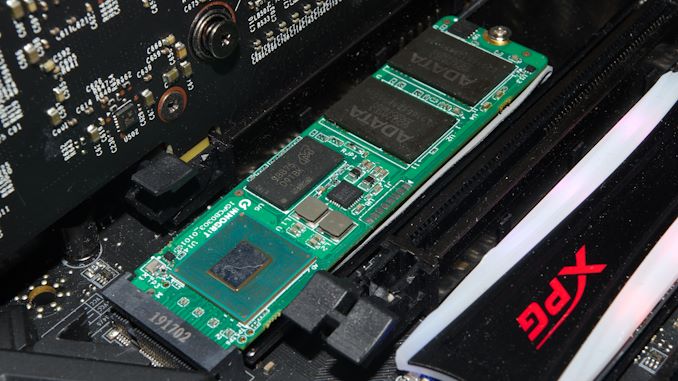
Among a mountain of new product announcements at CES, ADATA previewed three upcoming high-end consumer SSDs supporting PCIe 4.0. These will launch under their XPG gaming-oriented brand, and will serve to complement or replace the existing XPG Gammix S50, which ADATA's current PCIe 4.0 SSD based on the Phison E16 controller. The E16 launched last summer and is so far the only consumer PCIe 4.0 SSD controller shipping in retail SSDs. Phison's own E18 follow-up controller is expected to arrive around Q3, but before then we'll see other competitors start to deliver their own PCIe 4.0 SSD controllers.
ADATA tries out SSD controllers from almost everyone in the market, but their most popular SSDs in recent years rely on Silicon Motion controllers. The SM2262 and SM2262EN controllers are used in ADATA's best-performing PCIe 3.0 SSDs. For PCIe 4.0, Silicon Motion will replace those with the high-end SM2264 8-channel controller and the more mainstream SM2267 4-channel controller. Thanks to supporting much faster NAND interface speeds, the SM2267 should be able to offer performance comparable to current-generation 8-channel controllers, which means most of the extra bandwidth provided by the upgrade to PCIe 4.0 will go unused by the SM2267. Still, at 4GB/s for sequential reads, 3GB/s for sequential writes, and 400k IOPS for random IO, this is not by any measure a low-end solution. ADATA will be using the SM2267 in the XPG Pearl.
ADATA's drive using the Silicon Motion SM2264 will be the XPG Indigo. This should hit 7GB/s for sequential reads, more or less saturating the PCIe 4.0 x4 interface. Sequential writes will be a bit slower at around 6GB/s, and random IO speeds will get up to 700k IOPS.
Lastly and perhaps most interesting is the XPG Sage, one of a handful of upcoming products using the Rainier controller from newcomer Innogrit. This is currently promising the highest performance: 7GB/s reads, 6.1GB/s writes, and 1M IOPS for random IO. Those minor increases in top-line performance numbers relative to the XPG Indigo won't matter to real-world consumer usage, and whether the Sage or Indigo is the better overall performer may come down to which controller architecture offers better performance at low queue depths.
The release dates for ADATA's upcoming PCIe 4.0 SSDs have not been set, and it's not yet clear whether the Innogrit or Silicon Motion solutions will be ready to ship first. Of the three new drives, only the Innogrit-based Sage was featured in live demos at ADATA's CES 2020 exhibit. It appears unlikely that any of them will ship until around Computex (June) at the earliest. All three drives are currently planned to be offered in capacities up to 4TB using 96L TLC NAND—but for at least the Sage, ADATA hasn't decided whether to use Toshiba or Micron TLC.



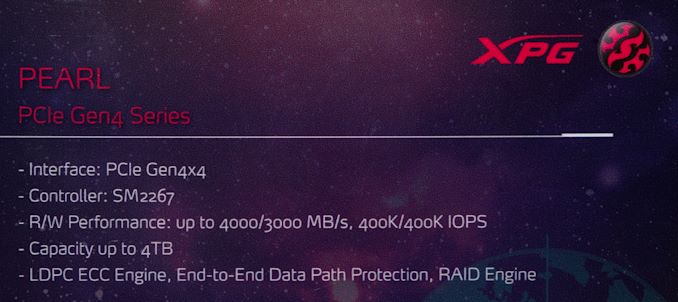
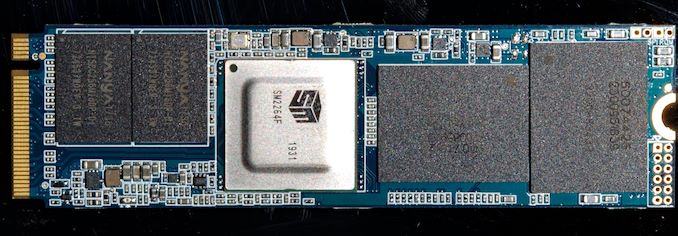
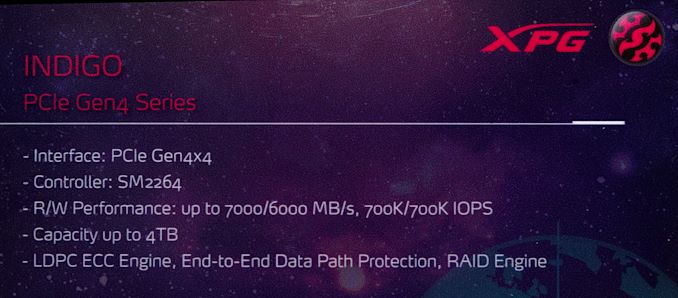

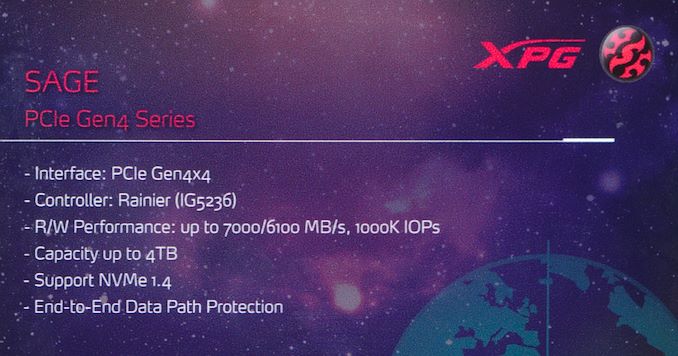








29 Comments
View All Comments
RSAUser - Saturday, January 18, 2020 - link
Because any PCIe 4 benefit transfers to 5...bill44 - Sunday, January 19, 2020 - link
I would like to see PCIe 4.0 drives tested in PCIe 3.0 slots.If you're looking to future-proof your purchase but only have PCIe 3.0 right now. Also external enclosures such as TB3 that only have PCIe 3.0.
anad0commenter - Monday, January 20, 2020 - link
I'm planning to buy the Samsung 980 PRO for my PCIe 2.0 laptop. Why? Because 1) PCIe 4.0 should be backwards compatible, 2) I have NVMe support in the bios already, 3) It will run at lower speeds so virtually no chance of throttling, 4) it will still likely outperform any PCIe 2.0 SSD in existence, and 5) I can move it to my next laptop which I plan to buy in 2021.weilin - Tuesday, January 21, 2020 - link
Interesting enough... I've been hunting for a PCIe 2.0 based NVMe SSD and as far as I can tell... They simply do not exist? I found 1 or 2 PCIe 2.0 drives that are AHCI... But no NVMe ones?anad0commenter - Tuesday, January 21, 2020 - link
Pretty much what I found as well. My laptop uses a custom bios that specifically added NVMe support thanks to a well-known bios hacker. PCIe 2.0 was never meant to have NVMe.Tomatotech - Monday, January 20, 2020 - link
Given the downward trajectory of prices, it would be foolish to buy 4.0 drives now unless you already have or plan to get 4.0 mobo within say, 3 months. It’s still bleeding edge and you’ll pay for that.Six months? Get 3.0 now. In six months there will be better / cheaper 4.0 drives available. Actually your 3.0 drives will still be excellent when transferred to a 4.0 system given that at this moment in time you can pick from the best 3.0 drives ever made while the 4.0 choice is still very limited and somewhat experimental.
anad0commenter - Monday, January 20, 2020 - link
For me MLC nand is the only acceptable choice. There will be no downward trajectory in prices of SSDs using MLC nand. Because there is literally only one manufacturer of consumer grade MLC nand SSDs. They have no reason to ever lower their price, in fact they have all the more reason to increase it, now that it's becoming so rare and everyone else is moving towards QLC.Makaveli - Monday, January 20, 2020 - link
3D TLC is acceptable these days for endurance so think its a good replacement for MLC currently. As for QLC no thanks.MLC will continue to get more expensive as time goes on.
James5mith - Monday, January 20, 2020 - link
A 4TB TLC M.2 drive? I'm definitely interested.Most of what I've read so far was indicating that QLC was the only way we were going to get 4TB+ on an M.2 form factor this year. If this is indeed still TLC, I'll buy one for each of my systems.